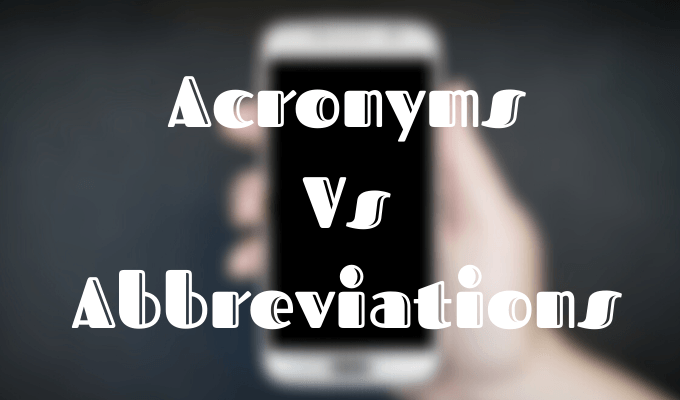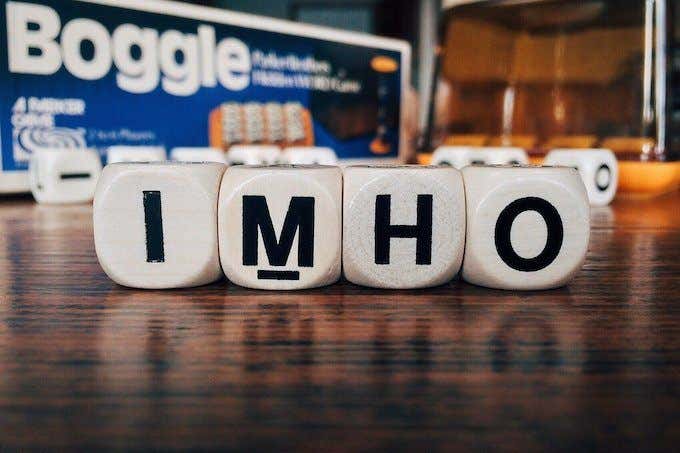Talking to someone online is often very different to having a conversation in real life. While people enjoy wasting hours on social media, nobody really has the patience to write out every sentence and to even use full words. That’s where things like online acronyms and emojis come in handy. However, there are so many acronyms and emojis that mean different things out there, it’s easy to misinterpret them or use them in the wrong situation. If you often find yourself confused about online slang, check out our list of some of the most common online acronyms and how to use them in your everyday communication.
Online Acronyms vs Abbreviations
One last thing before learning how to use acronyms in your online communication is to learn the difference between acronyms and abbreviations. The two are often mixed up by online users even though the difference lies right on the surface.Have a look at some of the most frequently used online acronyms and see how many of them you use online on a daily basis.
The Ones That You Know
We’ll start with the most common online acronyms of all. You’ve probably seen them a thousand times in text or memes. They’re the ones that indicate laughter – LOL (laughing out loud) and ROFL (rolling on the floor laughing).
The Most Used One Online
The Social Media Ones
Some acronyms are very specific to certain social media networks. Like RT for “retweet” on Twitter. One online acronym that is more commonly used on pretty much every social network is DM for direct message (or PM for private message). Users often ask each other to DM them about something if they want to keep the rest of the conversation private.
The Completely Useless Ones
While some of the acronyms are definitely useful and are recognized by everyone, some of them are just absolutely useless. Like THNX for “thanks” and YH for “yeah”, both of them being only 2 letter shorter than the full words.
The Affirmation Ones
In a casual conversation with your friends or colleagues, instead of using “yeah” for a hundredth time, you can use one of the affirmative acronyms. For example, IKR for “I know, right?” or OFC for “of course”. If you have something to add, you can start your message with FWIW that stands for “for what it’s worth”, or TBH that stands for “to be honest”. On the opposite, if you don’t know the answer to your friend’s question and don’t have time to explain it, you can just say IDK which reads as “I don’t know”. And if you feel like ending the conversation right there and then, you can just use NVM that stands for “never mind”.
The Ones for When You Have to Go
When you’re having a chat with someone and have to leave for a short period of time, a quick type of BRB (be right back) will tell them you’re coming back in a minute to continue the conversation. If you won’t be returning to your chat, you can use G2G (got to go). If you need to let someone know you’re close to your meeting place, use a quick OTW that stands for “on the way” or OMW for “on my way”.
The One That’s the Most Real
For when you’re talking about something that doesn’t take place online, there’s a handy acronym IRL that stands for “in real life”.
The Naughty One
When you’re including something private in the chat that’s not meant for anyone else’s eyes but the recipient’s, it’s good to use a NSFW acronym. It stands for “not safe for work” and it will tell them not to open it on a work computer. However, it normally indicates that the message includes nudity or sexual content.
The Opinionated Ones
For when you feel strongly about something but want to express it in a polite manner, there are IMO (in my opinion) and IMHO (in my humble opinion) acronyms. You can even take it a step further by using AFAIK (as far as I know) or AFAIC (as far as I’m concerned).
The WTF One
Another common-known acronym is the WTF one. Both the original and WTH (what the hell/heck) versions are used to express your surprise or annoyance about something.
TLDR (Too Long, Didn’t Read)
Acronyms can be of great use when you’re typing a quick text on your phone while being on the move. Takes less time to type two or three letters than a full word or phrase. However, not many of them are accepted in professional communication. So it’s best to use acronyms in casual chats and conversations with friends and abbreviations – with your colleagues at work. While there are hundreds of new online acronyms appearing online every day, we covered the most used ones on the internet. After learning these you won’t have to ask your friends what that word they just used means anymore.




